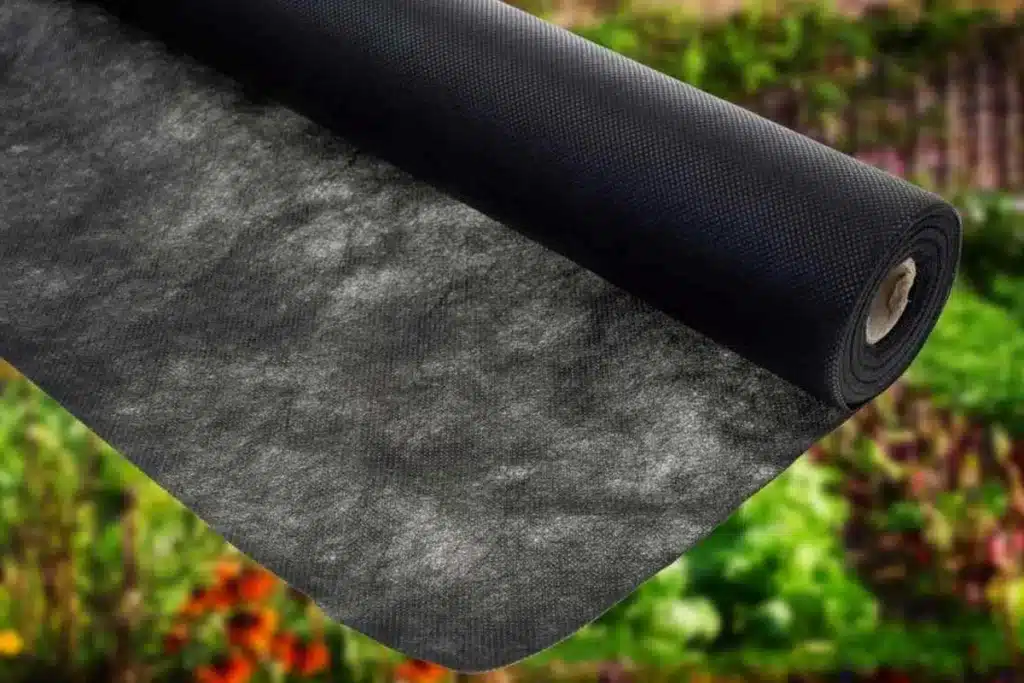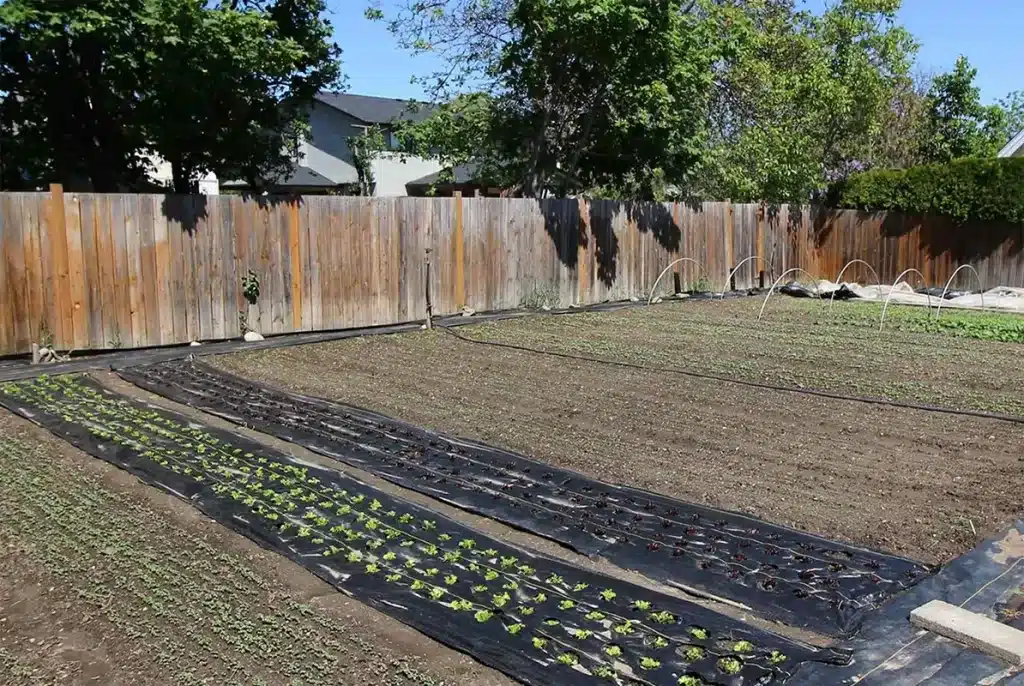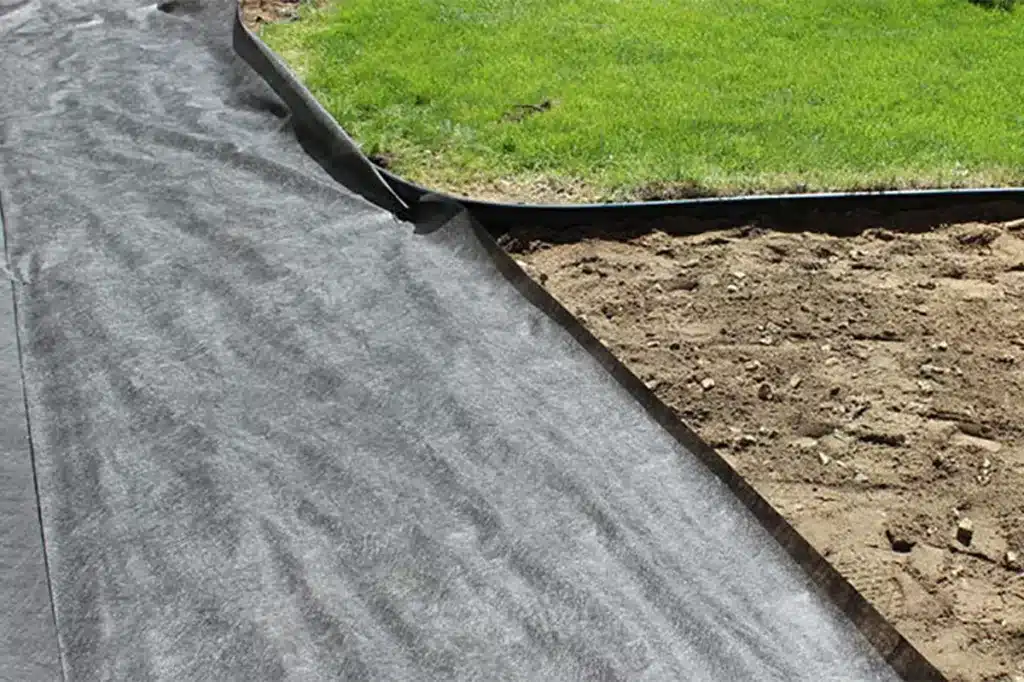+86-159 9860 6917
info@geofantex.com
geofantex@gmail.com
+86-400-8266163-44899
Weed prevention is a crucial aspect of maintaining healthy and aesthetically pleasing gardens, pathways, and agricultural spaces. One of the most effective tools for this purpose is geotextile fabric. In this article, we delve into the world of geotextile fabric, exploring its effectiveness in weed prevention, the best materials for weed blockers, the distinction between weed membranes and geotextile, and the impact of geotextile fabric on root growth.
Does Geotextile Fabric Stop Weeds?
Geotextile fabric is a popular material used in landscaping and gardening to control weeds. It works by providing a physical barrier that prevents weed seeds from sprouting while still allowing air, water, and nutrients to pass through to the soil below. Here’s a detailed analysis of its effectiveness and other relevant factors:
How Geotextile Fabric Works: Geotextile fabric is made from synthetic materials such as polypropylene or polyester, which are woven or nonwoven to create a mesh. This mesh prevents weed growth by blocking sunlight from reaching the soil, which is essential for seed germination. The fabric also allows water and nutrients to pass through to the soil, helping maintain plant health without encouraging weed growth.
Scientific Studies and Expert Opinions: Several studies and expert opinions support the use of geotextile fabric as an effective weed barrier. Research has shown that geotextile fabrics can reduce the emergence of weeds by up to 90% or more when properly installed. Experts in horticulture and landscaping generally agree that geotextile fabric is highly effective in controlling perennial weeds, especially in areas where long-term weed suppression is needed.
- A study published in the Journal of Environmental Horticulture demonstrated that geotextile fabrics reduce weed density by preventing light from reaching the soil, and also improve water retention, which benefits plant growth.
- Landscape professionals note that geotextiles are especially beneficial in high-maintenance areas like garden beds, flower beds, or under paved surfaces like patios, where weed growth can be persistent.
Potential Limitations
While geotextile fabric is effective at blocking weeds, it is not a foolproof solution. Some of the potential limitations include:
- Over time, fabric can degrade: UV light, moisture, and temperature fluctuations can cause the fabric to break down over several years, reducing its effectiveness.
- Not effective for all types of weeds: Larger, more aggressive weeds, such as certain grasses and shrubs, may still find ways to grow through or around the fabric, especially if the fabric is not properly installed or maintained.
- Installation challenges: For optimal effectiveness, geotextile fabric must be properly installed, with overlapping seams to prevent weeds from sneaking through gaps. Improper installation can lead to failure.
Comparison to Other Weed Control Methods
When comparing geotextile fabric to other weed control methods, it offers several advantages:
- Mulching: Organic mulches, like wood chips or straw, also suppress weeds, but they need to be replenished regularly, as they decompose. Geotextile fabric provides a long-term, low-maintenance solution.
- Herbicides: Chemical herbicides can also control weeds but may harm the environment, surrounding plants, and wildlife. Geotextile fabric offers a more eco-friendly alternative.
- Manual Weeding: While effective, manual weeding is time-consuming and labor-intensive. Geotextile fabric reduces the need for frequent hand weeding.
Key Points Summary
- Effectiveness: Geotextile fabric is highly effective at blocking weeds by preventing light from reaching the soil while allowing air and water to pass through.
- Limitations: Fabric can degrade over time, and it may not stop all types of weeds. Proper installation is crucial for success.
- Comparison: Compared to organic mulches, herbicides, and manual weeding, geotextile fabric offers a low-maintenance, long-term solution with fewer environmental impacts.
In conclusion, geotextile fabric is an effective tool for weed control, especially in gardens and landscapes where long-term, low-maintenance solutions are needed. However, it should be used in conjunction with proper installation techniques and maintenance for maximum results.

What is the Best Material for Weed Blockers?
The best material for weed blockers depends on the specific application, but woven and non-woven geotextile fabrics, as well as landscape fabric and cardboard, are among the top choices. Woven geotextile fabrics are durable and provide excellent strength, making them suitable for high-traffic areas and long-term installations. Non-woven geotextile fabrics, on the other hand, offer better water permeability and are often used in garden beds and landscaping projects. Both types are made from synthetic fibers like polypropylene or polyester, which resist degradation and provide effective weed control.
Is a Weed Membrane the Same as a Geotextile?
Definitions
- Weed Membrane: A weed membrane is a landscaping fabric specifically designed to suppress weed growth by blocking sunlight while allowing water and air to pass through. It is commonly used in gardens, pathways, and under decorative surfaces like mulch or gravel.
- Geotextile: Geotextiles are synthetic or natural fabrics used in civil engineering and landscaping projects. They serve various functions, including filtration, drainage, separation, reinforcement, and protection.
Functions
- Weed Membrane: Primarily used to prevent weeds from growing. Allows air, water, and nutrients to reach the soil while minimizing weed intrusion.
- Geotextile: Used for soil stabilization, filtration, erosion control, and drainage. Acts as a barrier between soil layers to improve structural integrity in construction projects.
Materials
- Weed Membrane: Typically made of woven or non-woven polypropylene or polyethylene, designed to be lightweight and UV resistant.
- Geotextile: Made from woven, non-woven, or knitted materials, such as polypropylene or polyester. Often thicker and more durable than weed membranes.
Applications
- Weed Membrane: Landscaping: Placed under gravel, bark, or paving to prevent weed growth. Gardening: Protects flower beds and vegetable plots from invasive plants.
- Geotextile: Civil Engineering: Used in road construction, retaining walls, and under foundations. Landscaping: Prevents soil erosion on slopes or acts as a filtration layer.
Comparison
- Purpose: Weed membranes are specifically designed for weed control, whereas geotextiles serve broader purposes, such as structural support and drainage.
- Durability: Geotextiles are generally more robust and suitable for heavy-duty applications.
- Permeability: Both allow water passage, but geotextiles may provide superior filtration for drainage.
- Cost: Weed membranes are typically more affordable, making them ideal for smaller-scale landscaping projects.
- Ease of Use: Weed membranes are lighter and easier to cut, making them user-friendly for DIY gardeners.
Advantages and Disadvantages
Weed Membrane:
- Advantages: Affordable, easy to install, effective for weed control.
- Disadvantages: Limited lifespan and functionality compared to geotextiles.
Geotextile:
- Advantages: Durable, versatile, and suitable for various industrial applications.
- Disadvantages: Higher cost and may be overkill for simple weed control.
In summary, while both materials may overlap in landscaping applications, they are not the same. Weed membranes are specialized for weed control, whereas geotextiles have broader and more heavy-duty uses in construction and erosion prevention.
Can Roots Grow Through Geotextile Fabric?
Geotextile fabrics are synthetic materials widely used in landscaping, construction, and erosion control to stabilize soil, provide filtration, and enhance drainage. These fabrics are typically made from woven or non-woven polypropylene or polyester and come in various grades designed to meet specific project needs. One question often asked in these applications is whether plant roots can grow through geotextile fabric, as this can impact both the performance of the fabric and the surrounding ecosystem.
Key Findings
Properties of Geotextile Fabric
- Permeability: Geotextile fabrics are designed to allow water and air to pass through, which can support plant growth by maintaining soil aeration and moisture levels.
- Strength and Thickness: Heavier, tightly woven fabrics offer greater resistance to root penetration, while lightweight, non-woven fabrics are more susceptible to puncture by roots.
Root Penetration Observations
- Plant Species: Aggressive root systems, such as those of bamboo or certain trees, are more likely to penetrate geotextile fabric. In contrast, smaller plants with less invasive roots may not breach the material.
- Fabric Type: Non-woven geotextiles are more prone to root intrusion than woven types due to their looser structure.
- Environmental Conditions: Prolonged exposure to moisture, soil acidity, and UV rays can degrade geotextile fabric over time, increasing the likelihood of root penetration.
Studies and Practical Applications
- Research has shown that roots can sometimes exploit weaknesses in geotextile fabric, such as seams, tears, or areas of degradation.
- In landscaping, geotextile barriers are often used beneath pathways or hardscaping to prevent root invasion, though they may require reinforcement in areas with aggressive vegetation.
Conclusion and Implications
While geotextile fabric can act as a partial barrier to root growth, its effectiveness depends on the material’s specifications and the environmental context. Selecting the appropriate type of geotextile and considering the specific root behavior of plants in the area are critical to ensuring long-term performance. Regular maintenance and monitoring may be necessary to prevent root intrusion and fabric degradation over time.
Geotextile fabric is a highly effective tool for weed prevention, offering a durable and permeable barrier that blocks weed growth while supporting soil health. Woven and non-woven geotextile fabrics are among the best materials for this purpose, each with specific benefits depending on the application. While weed membranes and geotextiles are closely related, geotextiles have broader uses beyond weed control. When properly installed, geotextile fabric prevents roots from growing through, ensuring long-term weed suppression and healthier plants. For the best weed prevention, incorporating geotextile fabric into your landscaping and gardening practices is a smart and effective choice.



Get Free Sample
We’ll respond as soon as possible(within 12 hours)






















